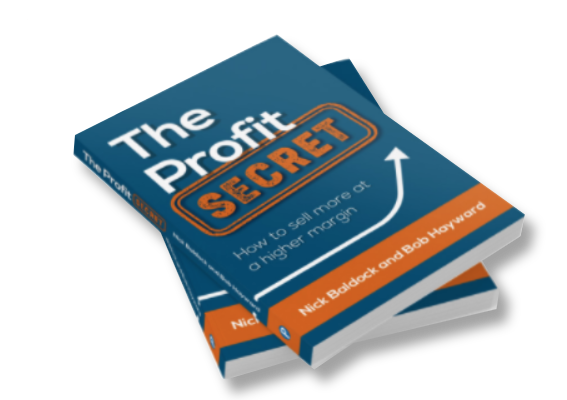The Science of Sustainable Change

When I made the transition from psychiatric nursing to opening the first of my seven businesses, I noticed something fascinating: the principles that help patients achieve lasting behavioural change aren't so different from those that help a business transition from struggling to succeeding. This insight has shaped our uncommon approach at Be More Effective, where we blend scientific rigour with human understanding to create sustainable change.
The Challenge We Face
Recent Harvard Business Review research reveals a sobering reality: only 12% of major change programs produce the desired lasting results with 75% achieving mediocre results and the other 13% failing completely. As someone who's worked with both FTSE 100 companies like Husqvarna, Vodafone and Unilever and innovative disruptors like Sapphire Balconies, and Colorminium, I've seen firsthand why this happens. Most change initiatives focus on processes and systems while overlooking the human element - the very thing that determines success or failure.
The Psychiatric Nurse's Perspective
My background in psychiatric nursing taught me something crucial: lasting change requires more than just good intentions. When I moved from Intensive Care Nursing (ICU) to Psychiatry, my Nurse Tutor explained I was moving from an environment where decisions and changes being made would see results within seconds to one where the results of changes might take years. With people slow is fast.
Whether in ICU or Psychiatry no Doctor or Nurse would rely solely on intuition and experience
I quickly learned that the same applied in business. In my own businesses and in client businesses prescribing solutions to problems without proper diagnosis almost always caused bigger problems. Please never - never implement solutions without first understanding the root causes of your organisational and people challenges.
This approach has proven particularly valuable when working with companies like Husqvarna and Unilever, where complex organisational structures demand nuanced understanding. As one CEO told me, "Your background and broad experience helps you see patterns in the data that you uncover with your tools. We've missed those patterns for years.”
The Science Behind Sustainable Change and Business Improvement
Research from Bain & Company supports what this observation: organisations that combine analytical rigour with emotional intelligence are way more likely to achieve lasting change. Here's what we've learned works:
1. Diagnostic Before Prescription
In business as in healthcare, accurate diagnosis precedes effective treatment. We use world-class tools like Birkman, The European Foundation Quality Management Model and Motivational Maps to create a detailed picture of your organisation's current state alongside Appreciative Enquiry. This more scientific approach helps identify hidden barriers to change that traditional consulting can miss.
2. The Human Factor
Marshall Goldsmith's research shows that 70% of change initiatives fail due to human factors that generate things like resistance to change, fear, lack of trust, and misunderstanding.
Gilles Rochefort, author of Tales from the Playing Field, whose work spans sports management and global business, draws a direct line from leadership, a human skill, through people development and improvements in team performance
Patrick Lencioni in his great book The Five Dysfunctions of a Team emphasizes the critical importance of leadership in fostering a team environment where trust, open communication, and accountability thrive, all of which are essential for navigating business change and growth.
We must address these human elements head-on. With some of the large-scale change programmes I’ve been involved with over the years that has meant at least these four things.
- Getting communication to work bottom up as well as top-down. Leadership listening is often a better starting point than Leadership telling.
- Co-creation across the workforce involving all key stakeholders, especially with the cynics and naysayers.
- Go on a journey rather than launch an initiative. Your walk talks louder than your talk talks so get a critical mass and all the Leadership moving. Deliberate small steps in the right direction.
- Celebrate each and every step in the right direction. Celebrate lead measures and activity. Celebrate the attempts more than the results.
3. Measurable Progress on Lead Measures and Human Factors
Whether you draw from Franklin Covey's methodology, or Vern Harnish with his work on Scaling Up, or the original Guru Peter Drucker we must establish clear metrics for success.
Too often these metrics and goals are lag measure and too often they focus on the obvious hard data like sales and profit numbers missing out on the lead measures as well as the human factors. Lead measures are activity based, are more under our control, are easier to change and quicker to change. Do the right things often enough and well enough and the lag measures, the lag results like sales, will come. Shift leadership skills and behaviours and you change the culture of the team. Change the climate in the team and activities improve. Improve performance and lag results will come
Measure both hard data and human factors. Measure lead and lag measures. Put the focus and drive along with the reporting and recognition onto activity. The right things. At the right pace. At the right quality
This dual approach has helped our clients achieve success, in change initiatives and with business growth, significantly above the average.
4. Ready. Fire. Aim. Fail fast. Fail Forwards. Learning from live R&D.
As Robin Sharma often says, "Change is hard at first, messy in the middle, and gorgeous at the end" – Business change initiatives, business growth initiatives, however well intended and planned, and never go perfectly when you launch them. Planning is way more important than the plan.
The 'Ready. Fire. Aim.' philosophy acknowledges that real-world feedback is infinitely more valuable than theoretical planning. When you launch before everything is perfect, you gain immediate market insights, discover unforeseen opportunities, and identify genuine pain points that no amount of preparation could have revealed. Consider how tech giants like Facebook and Amazon didn't wait for flawless products – they launched, learned, and iteratively improved based on real user feedback. The 'Ready. Fire. Aim.' philosophy isn't about being reckless; it's about being responsive. By starting now and embracing continuous improvement, you create a dynamic learning laboratory where each 'imperfect' step forward provides vital data for your next move. Most successful entrepreneurs and innovators understand that the cost of delay often exceeds the cost of imperfection, making 'Ready. Fire. Aim.' a strategic imperative for sustainable growth."
As John Mattone emphasises "If you’re not willing to raise your hand and acknowledge that you’ve got things to work on, there’s no way you can instigate growth and become the best you can be. It’s a willingness to look inside that’s the way to growth."
The "Ready. Fire. Aim." approach is particularly relevant to modern business change programs, and the data strongly supports this iterative methodology. Recent statistics show that agile approaches (which embrace this philosophy) significantly outperform traditional waterfall methods. In December 2023 Forbes reported on Zippia's research, that at least 71% of U.S. companies were using agile project management methodologies as of 2022, with a 64% success rate, compared to waterfall project management methods that had a 49% success rate
The "Ready. Fire. Aim." Philosophy means you fail forwards. Faster learning means you reduce risks because you are breaking change down into smaller increments. Teams stay motivated by seeing and feeling things happen, evolve and improve.
For businesses implementing change and growth programs, this means:
- Starting with a clear direction while starting before perfection
- Launching smaller initiatives that build momentum rather than massive transformation programmes
- Build in frequent feedback loops and deliberate adjustment points
- Focus on quick wins in lead measures, both hard data and human factors that can generate learning and momentum
The Insatiable Drive to Improve
One of my favourite quotes is, "The best only stay the best while they have an insatiable and humble determination to improve every day."
The future belongs to those who can anticipate and lead change. To those who bring the future into the present and do something about it today. Who develop the ability to deliberately implement sustainable change, a solid developmental pipeline of new knowledge, new skills, new teams and new products. The insatiable drive to improve isn't just an advantage – it is a survival skill. Without it you will get left behind.
Practical Next Steps
For leaders looking to implement sustainable change or growth, consider these starting points:
- Begin with thorough diagnosis using validated tools
- Focus equally on human and technical elements
- Measure the lead and the lag of both hard metrics and soft indicators
- Build capability rather than dependency
- Remember that sustainable change requires sustainable practices
As Tom Ziglar says, "The fastest way to success is to replace bad habits with good habits." The same applies to organisational change - it's about building sustainable practices that become part of your culture.
Conclusion
Sustainable change isn't just about implementing new processes or systems. It's about understanding the deep human elements that drive success or failure.
Want to learn more about implementing sustainable change or growth in your organisation?
Visit www.bemoreeffective.com
Or join our next Thoughts on Thursday Webinar
For more information please send a message via the Contact Us Page. Or you can register for an upcoming webinar.

.jpg)
